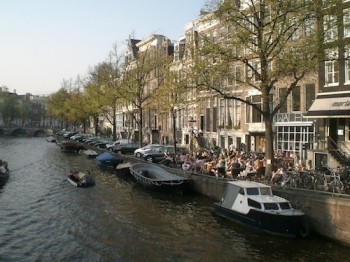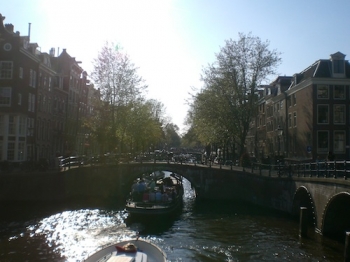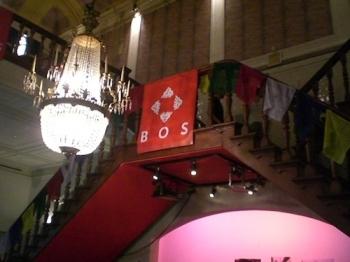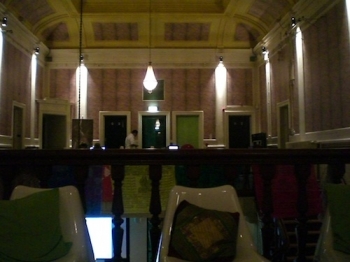Amsterdam's red light district and apparent openness to brownies, liberal sex and hemp are a self-parody. They are a conscious joke (albeit an economically beneficial one) by the city’s tourism industry, a stereotype that it perpetuates in the name of two things that the Dutch have always been good at: commerce and trade. Amsterdam defies stereotypes because it knows what the Anglophone world projects onto it. The Red Light District itself is only several streets’ worth along the canals, with sex workers waiting for customers as they peer outside the narrow alleyways in their booths with red and pink lights.
It goes to show that Amsterdam is hardly representative of Dutch culture. There are also the intense and vibrant multicultural activities taking place in the city every day and night. No better example of this is the Buddhist Film Festival Europe (which I hereby call BFFE or the Festival), to where we went to review whatever films attracted our fancy there. This year marks the foundation's sixth Festival.
It goes to show that Amsterdam is hardly representative of Dutch culture. There are also the intense and vibrant multicultural activities taking place in the city every day and night. No better example of this is the Buddhist Film Festival Europe (which I hereby call BFFE or the Festival), to where we went to review whatever films attracted our fancy there. This year marks the foundation's sixth Festival.
The two venues at which the BFFE was held, Compagnietheater and De Balie, are sophisticated, niche, and lovely settings at which to socialize, hold meetings, and watch performances (they seem to be more catered for plays and theatre rather than movies). I like Compagnietheater’s lower floor café, and no café in Holland is complete without Indian Tonic. De Balie’s top floor lounge, which has a pseudo-classical feel (especially with the design of the staircase and galleries).
Buddhists at the BFFE?
The BFFE is closely affiliated with the Buddhist Broadcasting Foundation (BFF), and the former was advertised as an event of the latter. While not being itself a politically inclined body, the BFF supports some organizations that work for more or less activist causes, from the problems in Burma (which has undergone somewhat encouraging changes since Aung Sang Suu Kyi’s release). The attendees, sure enough, come from a hodgepodge host interested in animation, Japanese and Asian culture, and also people interested in Buddhism or Buddhist-related activism, such as the democracy movement in Burma or humanitarian activity in Inner and Central Asia. Many are interested in or practice in a western Buddhist sa?gha.
Notably, there were very few monks and nuns and the entire atmosphere of the festival was typically Dutch, by laypeople and for laypeople primarily. This is not necessarily a restrictive state of things, because the BFFE has managed to build a reasonably tight-knit community that has members that seem quite familiar with each other.
Notably, there were very few monks and nuns and the entire atmosphere of the festival was typically Dutch, by laypeople and for laypeople primarily. This is not necessarily a restrictive state of things, because the BFFE has managed to build a reasonably tight-knit community that has members that seem quite familiar with each other.
One amusing occasion was when I sat down to watch “Abraxas,” and there was a gentleman beside me who was sharing his thoughts about Buddhism with his female companion. “I’m not a Buddhist,” he said in response to her question, “I see it as more of a lifestyle and philosophy than a


















